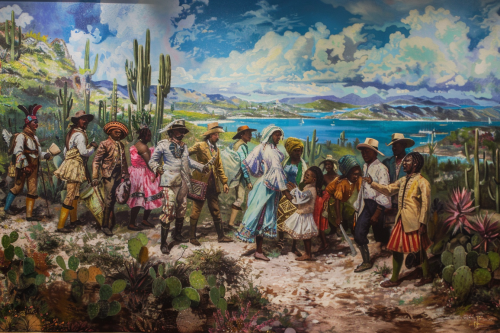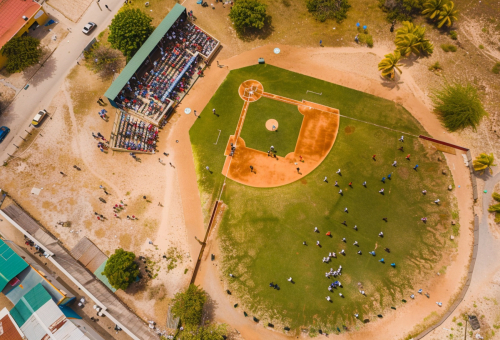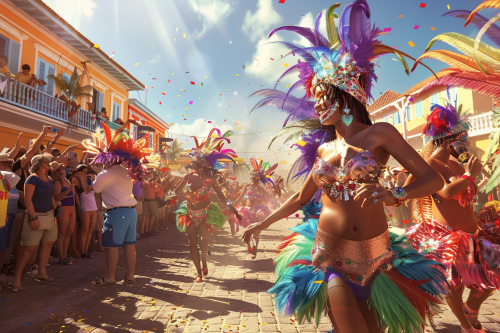Culture of Bonaire: a colorful mix of influences
Discover the diverse cultural expressions that make Bonaire unique and learn more about how Dutch influences and the Caribbean Sea have shaped the local culture. This will help you understand how islanders maintain and celebrate their cultural identity.
In this blog, we will explore the culture of Bonaire. A fascinating fusion of Caribbean, Latino-Caribbean and Dutch influences. Bonaire is an island known for its unique identity. Deeply rooted in traditions, language and way of life, Bonaire is a unique island. The local language, Papiamentu, enriches Bonairean culture and is cherished by the community.
The language Papiamentu
Papiamentu is a language rich in influences from Portuguese and Spanish, supplemented by elements from Dutch, African languages, and indigenous Arawak languages. This language is central to daily life on Bonaire. Papiamentu reflects the history and soul of the island. The language developed from the interaction between European settlers, African slaves and the indigenous population. The West India Company and the importation of slaves from Africa contributed to a language that facilitated communication between these different groups. Over the years, this language grew into a full-fledged language that is still used in everyday life. The language is a symbol of cultural pride and unity.
The role of Dutch
Despite the dominance of Papiamentu, Dutch also plays a major role. Bonaire is part of the Kingdom of the Netherlands, so Dutch is often written and spoken in schools and official institutions. In its way, this again emphasizes the diversity of language use on the island.

Religion on Bonaire
Among the local population, religion plays a central role in daily life. In this, the Catholic religion is dominant. Spanish and later Dutch settlers brought their religious traditions with them and these established themselves as the central beliefs. The predominance of the Catholic faith can also be seen in the architecture of the churches and the celebration of Christian holidays. In addition to this religion, there are other communities on Bonaire, including Protestant, Adventist, evangelical and Pentecostal churches, as well as a small Jewish community. This diversity reflects the openness and tolerance within Bonaire’s culture.
Over the years, religion in Bonaire has adapted to modern times, but it still retains its influence on social and cultural life. The churches play an active role in the community by offering social and educational programs. This underscores the involvement and importance of religion in Bonaire’s daily life and culture.
Sports culture Bonaire
Sports have a big role in Bonaire’s culture. Baseball is one of the most widely played sports on the island among locals. This island produces talented players who find recognition locally and internationally. Soccer is also a popular team sport on the island, with many local teams and leagues. Beachtennis is also becoming increasingly popular with the community. These sports are more than just a sport; they bring communities together and are an important part of Bonaire’s culture.
Given Bonaire’s excellent wind conditions, windsurfing and kiteboarding are popular not only among tourists but also locals. Lac Bay is a favorite spot for windsurfers, while kiteboarders often seek out the beaches on the west coast.
With one of the most accessible and beautiful coral reefs in the world, it is no surprise that diving and snorkeling are also popular among locals. Many Bonaireans grow up with a deep appreciation for the sea and its marine life.

Media
Bonaire’s media landscape is an interesting mix of traditional and modern media. Newspapers, radio stations, and the Internet offer a look at both local and global events. In this, local media play an important role in Bonaire’s daily life. They do this by keeping residents informed of news, cultural events, and important announcements.
Several newspapers and radio stations produce in both Papiamentu and Dutch. This provides a wide range of information sources and connects Bonaire’s culture to the rest of the world.
Architecture
Climate and the Dutch colonial period have the most influence on Bonaire’s architecture. Herein, the focus is on wind cooling and sustainability. Characteristic are the brightly colored houses, which are a legacy of the Dutch colonial period. Because of the bright colors, such as orange, blue and yellow, the houses stand out vividly against the landscape. These houses often have high, pointed roofs and wide porches to provide shade and promote natural ventilation. This is crucial for comfort in the hot climate.
Traditional Bonairean architecture also includes elements that reflect its strong connection to the sea, such as boat-shaped roof moldings and details inspired by shipping. Modern structures see a growing emphasis on sustainability. Such as the use of solar energy and rainwater harvesting systems. These reduce the carbon footprint of buildings and respect the island’s natural resources.
Culinary culture Bonaire
Bonairean cuisine is a melting pot of flavors. Various flavors can be found with influences from Caribbean and Dutch cuisine, among others. Due to its geographical location, Latin American flavors also find their way back to the island. This leads to a fascinating mix of dishes that underscore the diversity of Bonaire’s culture. Local specialties and the international influences come together in the cuisine of Bonaire. This is characterized by the use of fresh seafood, Caribbean spices and Dutch influences. Restaurants and food stalls offer a wide variety of culinary experiences.
Dance and music
Dance and music are essential components of Bonairean culture, enriching island life with rhythm and movement. Music on Bonaire ranges from traditional Caribbean sounds to influences from Latin America and Europe. Music festivals and live performances are popular events that attract locals and tourists alike.
The highlight of the year is Carnival. Carnival is an explosion of color, music and dance that fills the streets of Bonaire every February. This period of festivities showcases the island’s creativity and cultural heritage at its best.
Other cultural highlights include the Maskarada, where masked figures roam the streets, and Dia di San Juan i San Petro, a celebration in honor of the island’s patron saints. Both events highlight Bonaire’s deep-rooted traditions and culture.

Culture Bonaire
With a deep dive into Bonaire’s culture, this article provides an insight into the island’s rich and diverse cultural mosaic. From language and religion to sports, media and culinary traditions, this is how we discovered the diverse culture. Bonaire’s culture is a wonderful example of how tradition and modernity can merge, resulting in a vibrant and sustainable community. Have you become curious about this beautiful island and want to see more of Bonaire? Then check out our blog page with photos of Bonaire.